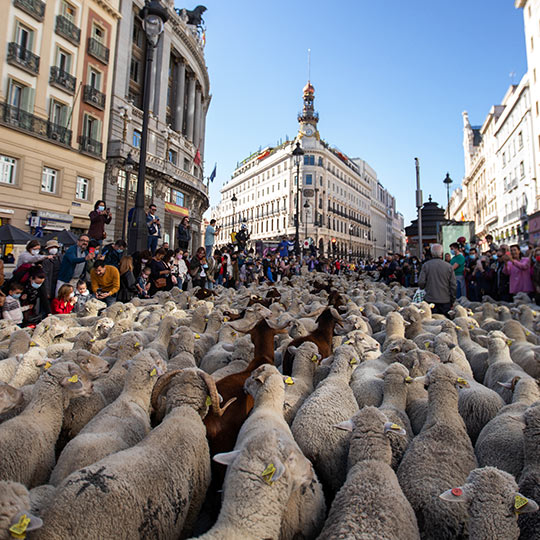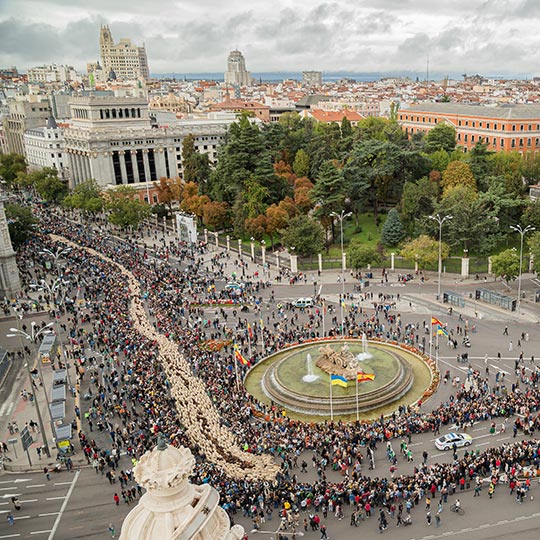Centuries of history
Centuries ago, transhumance used to move millions of livestock animals every year in Spain. Today few herders transhume. However, the last remaining transhumant herders are resisting the loss of this ancestral tradition.In pre-Roman times, the climate differences in the Iberian Peninsula motivated this controlled migration. The large herds of sheep, goats and cows spent the warmer part of the year in cool mountain pastureland and the colder seasons in distant warm valleys. The herdsman would lead the livestock on a walking journey that could last for weeks and would then repeat months later in the opposite direction. Over time, they began to use protected roads for this purpose: the so-called livestock trails. In Spain, these roads stretch for 125,000 kilometres and more than 400,000 hectares – almost 1% of the nation's territory. The largest and best known are the called the cañadas reales or royal glens.









